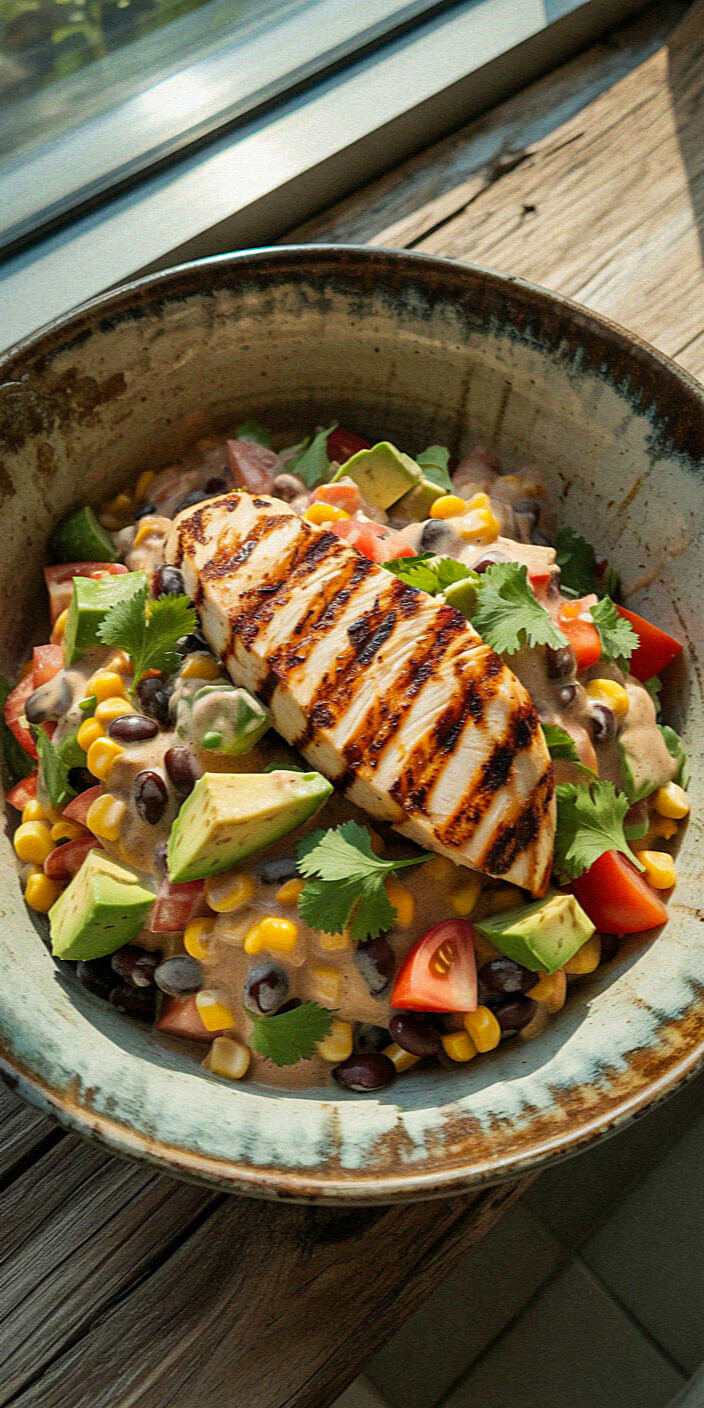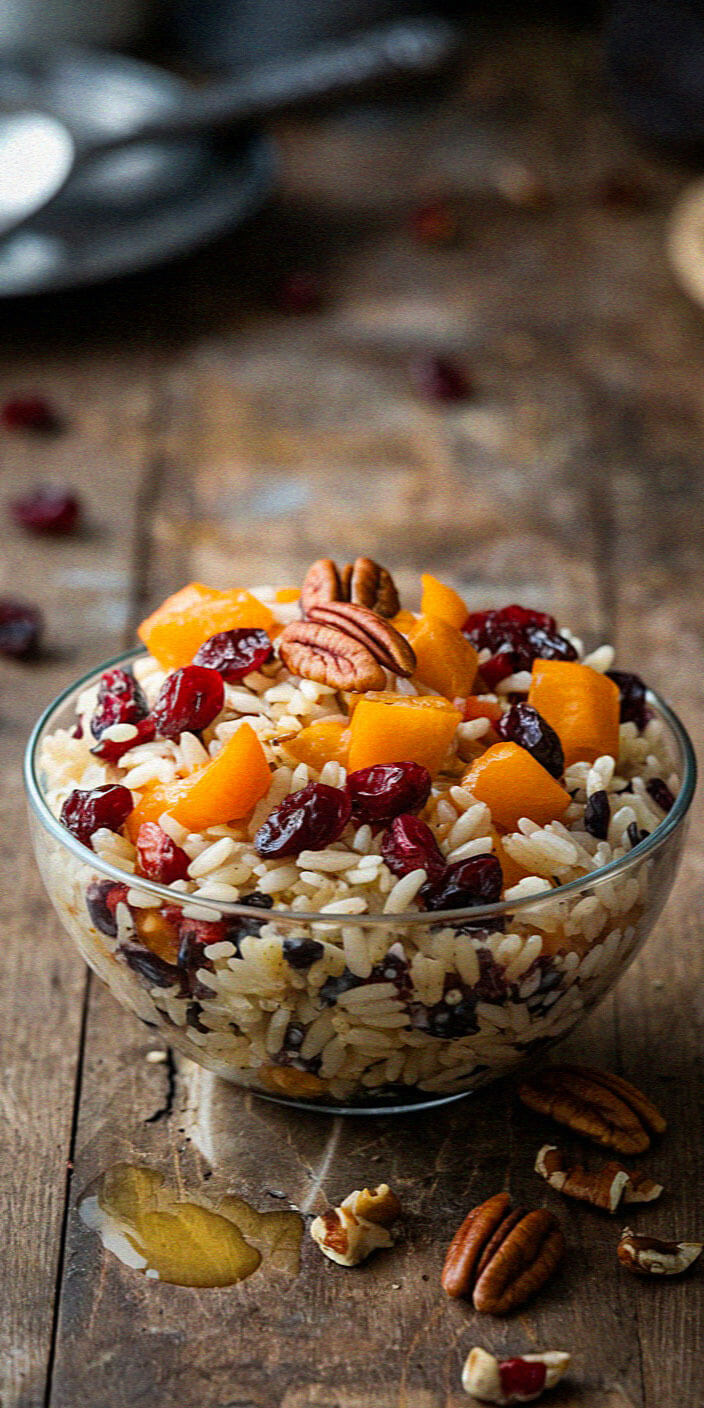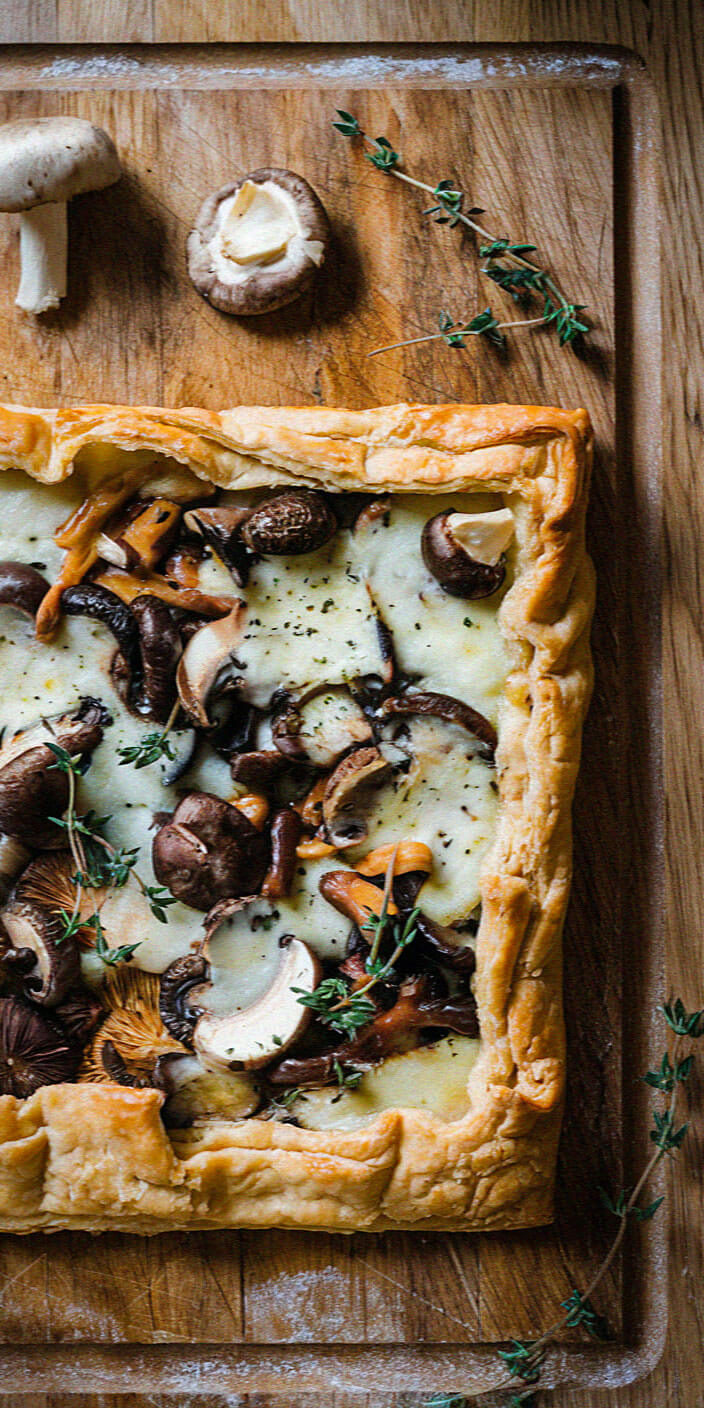
This website contains affiliate links. As an Amazon affiliate, I earn from qualifying purchases (What’s This?).
If you’ve ever sliced into a chicken breast only to find it disappointingly dry, you’re not alone.
Cooking juicy chicken breast that stays moist, tender, and flavorful can feel like chasing magic, but it’s really about knowing the right steps.
This guide will show you exactly how to cook chicken breasts perfectly every time, no matter your skill level.
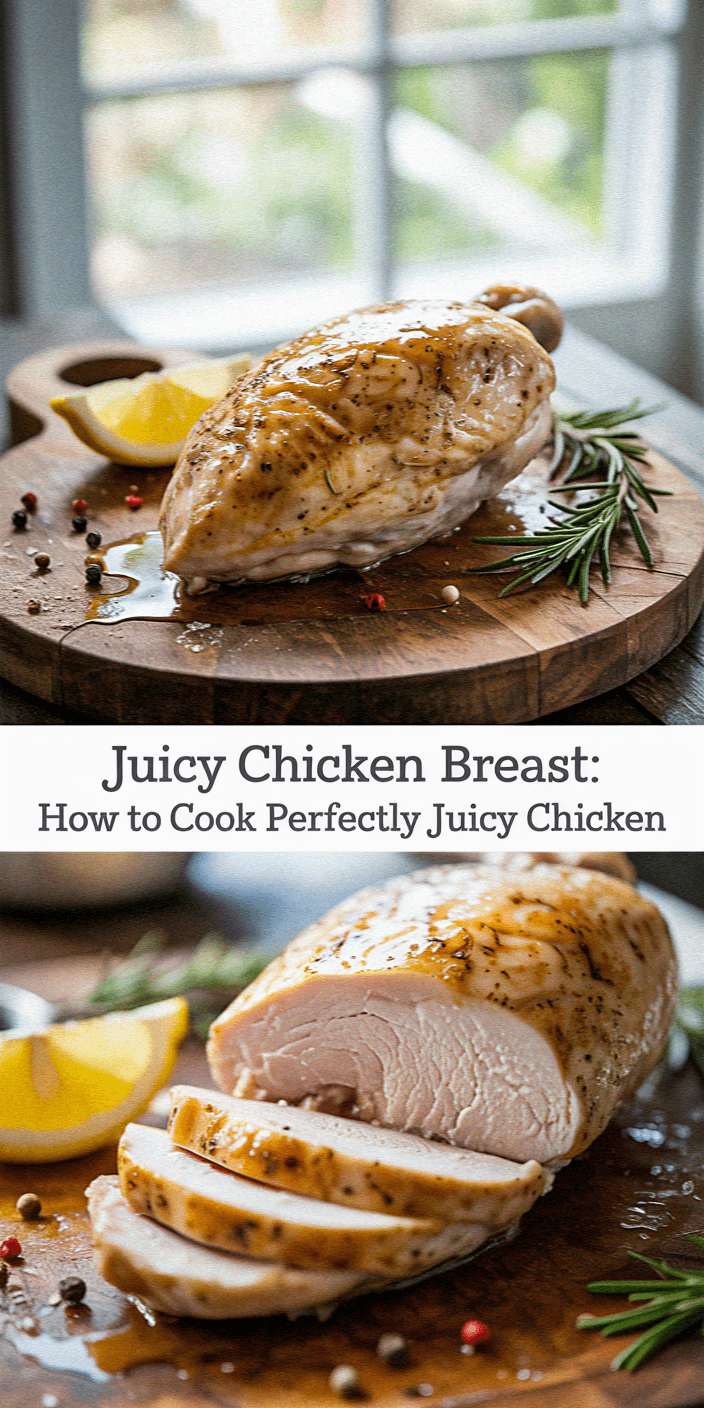
You’ll learn how to season, sear, bake, and rest the chicken so it turns out juicy and flavorful, not rubbery or bland.
Whether you’re cooking for family dinner or meal prepping for the week, this is your foolproof method to juicy chicken every single time.
Why is it so hard to cook juicy chicken breasts?
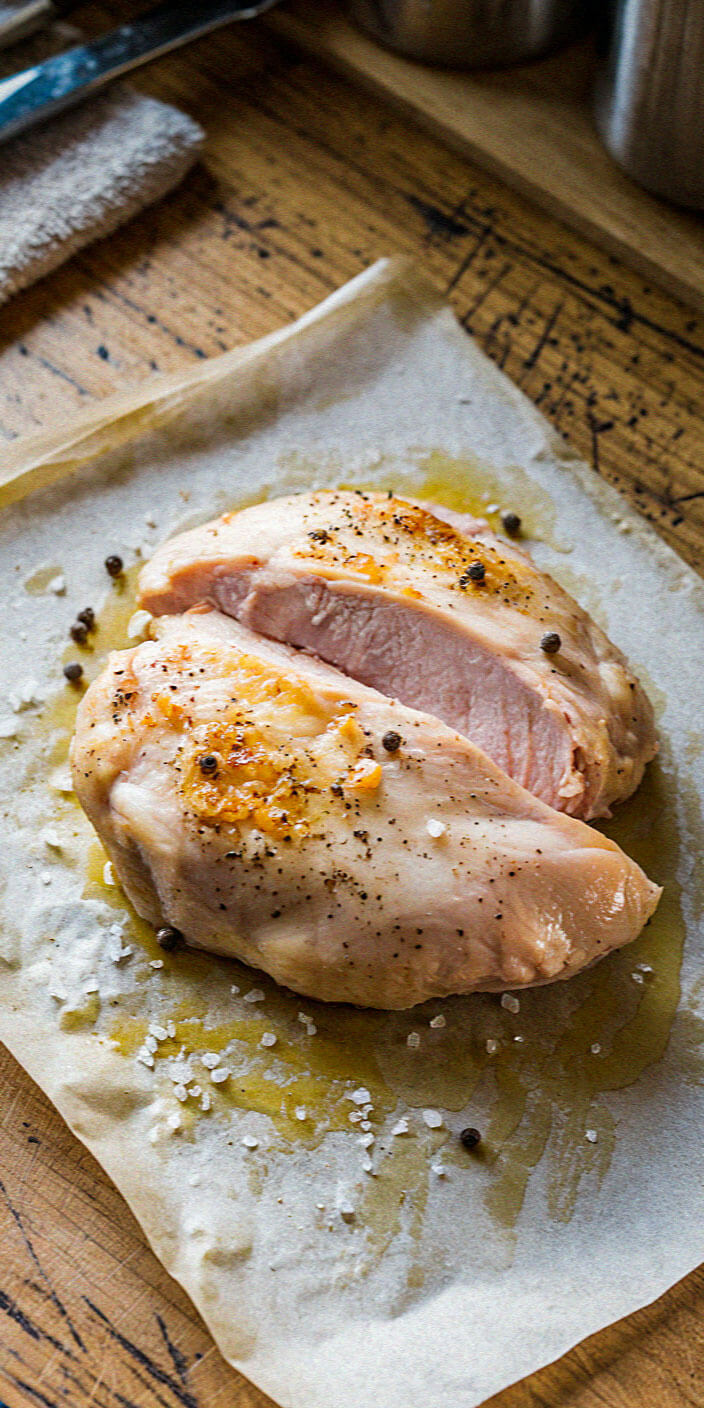
Chicken breast is naturally lean, which means there’s not much fat to keep it moist during cooking.
That’s why it’s easy to end up with dry chicken breast even when you think you’ve done everything right. The secret lies in balance: using the right seasoning, heat, and timing so the juice stays locked inside.
When you cook chicken breasts just right, the inside stays moist and the outside turns beautifully golden brown. A meat thermometer is your best friend here; it tells you exactly when the chicken is done without overcooking.
What’s the best way to prepare chicken breasts before cooking?
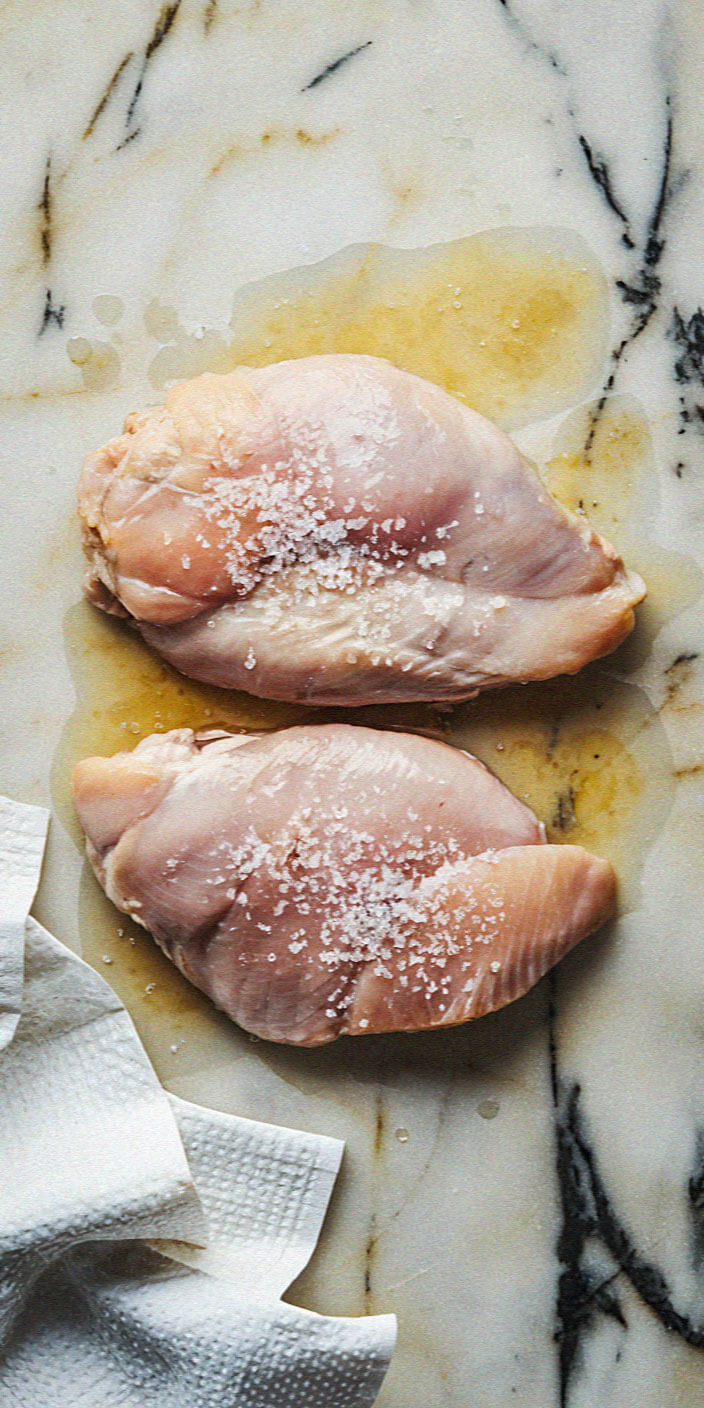
Start with fresh chicken if you can. Take the chicken out of the refrigerator and let it sit for about 15 minutes before cooking; this helps it cook evenly.
Pat chicken breasts dry with a paper towel so they sear properly instead of steaming. If they’re very thick, use a mallet to pound the thickest part to an even thickness.
This small step ensures your chicken cooks evenly, so you don’t end up with dry edges and a raw center.
Then season your chicken generously with salt and your favorite seasoning blend. A good rule of thumb is about one teaspoon of salt per pound of chicken.
Should you marinate your chicken?

If you want juicy and flavorful chicken, marinate. Even 30 minutes can make a big difference.
A greek chicken marinade with olive oil, lemon juice, garlic, and herbs is one of my favorites because it keeps the meat moist and tender while adding bright, tangy flavor. You can also marinate chicken overnight if you have time.
The acid in the marinade helps break down proteins just enough to make the chicken tender without turning it mushy.
Marinate your chicken in a covered dish in the refrigerator, and remember to pat it dry again before cooking so it sears beautifully.
What’s the best cooking method for juicy chicken breasts?
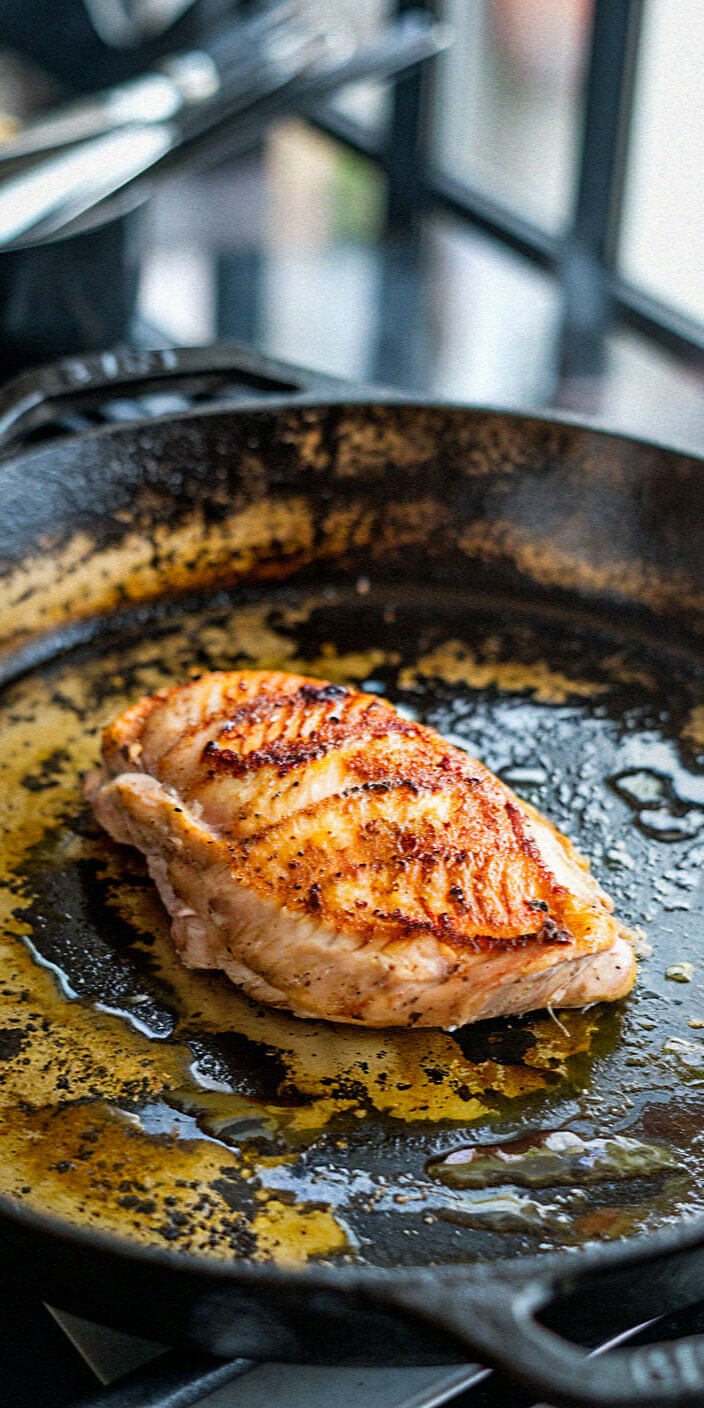
There are many ways to cook chicken breasts: you can bake, grill, or cook them on the stove.
But the best way to cook juicy chicken breasts consistently is using a cast iron skillet.
It holds heat evenly and gives that gorgeous golden brown crust.
Start by preheating your skillet over medium-high heat and adding a drizzle of olive oil.
When the pan is hot (but not smoking), add chicken breasts and cook for 5 to 7 minutes per side, depending on thickness.
Then transfer the chicken to a baking sheet and finish cooking in the oven until the internal temperature reaches 165°F.
This two-step cooking method locks in the moisture while ensuring the chicken is fully cooked.
How to keep chicken from drying out

The biggest mistake people make is overcooking.
Once chicken breast goes past 165°F, it quickly turns rubbery and dry.
Using a thermometer takes the guesswork out; insert it into the thickest part of the chicken. When it reads 160°F, take the chicken off the heat and let it rest.
The temperature will continue to rise a few degrees as it rests for 5 minutes, landing perfectly at 165°F.
Always let the chicken rest before slicing because this allows the juice to redistribute so your chicken turns out juicy and flavorful instead of leaking all its moisture onto the plate.
Should you use a skillet or bake chicken in the oven?
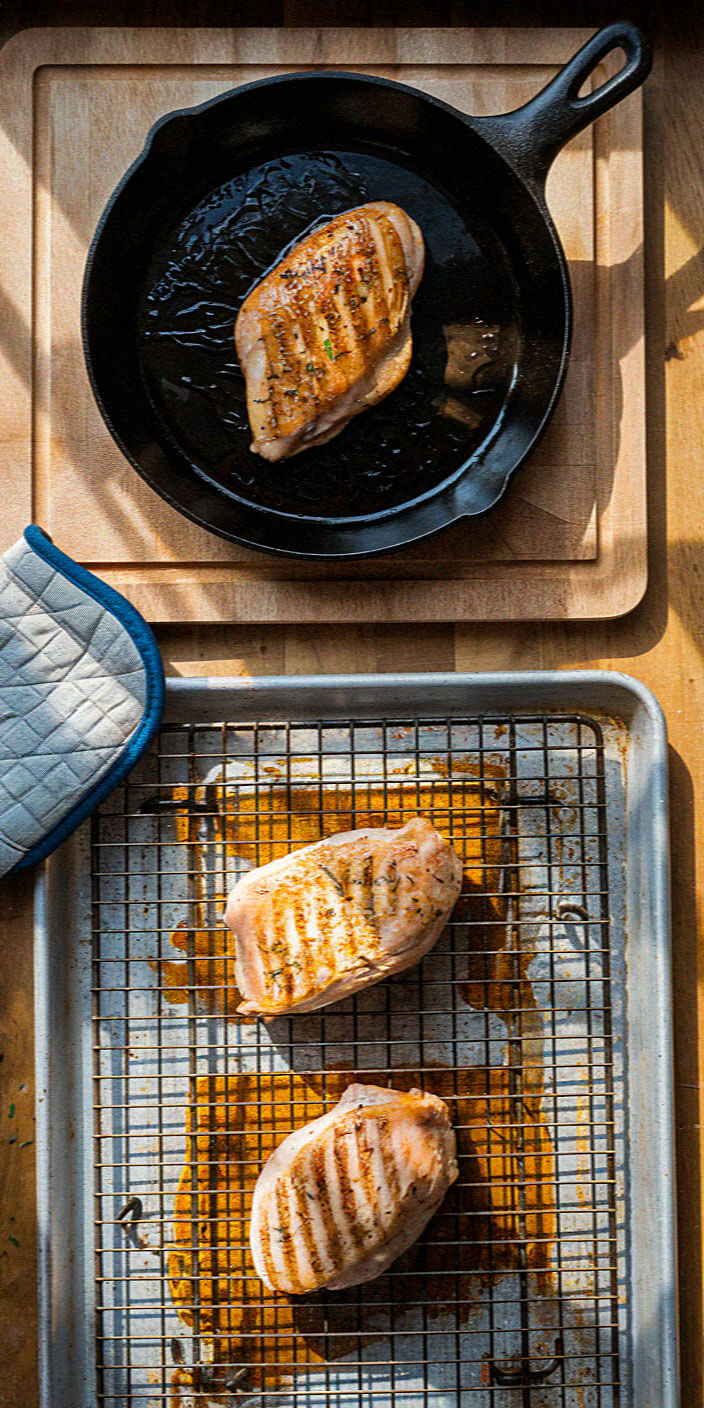
Both work, but each has its perks. Baked chicken is hands-free and ideal for meal prep. To bake chicken breasts, line a baking sheet with parchment paper and bake at 400°F for 18–22 minutes, depending on thickness.
Always bake until the internal temperature hits 165°F, no more. A cast iron skillet, on the other hand, gives you flavor that can’t be beat.
The high heat creates a delicious sear that seals in the juices. You can even start on the stove and finish in the oven using the same skillet. Either way, make sure to let it rest for 5 minutes before slicing.
How do you season chicken breasts for maximum flavor?
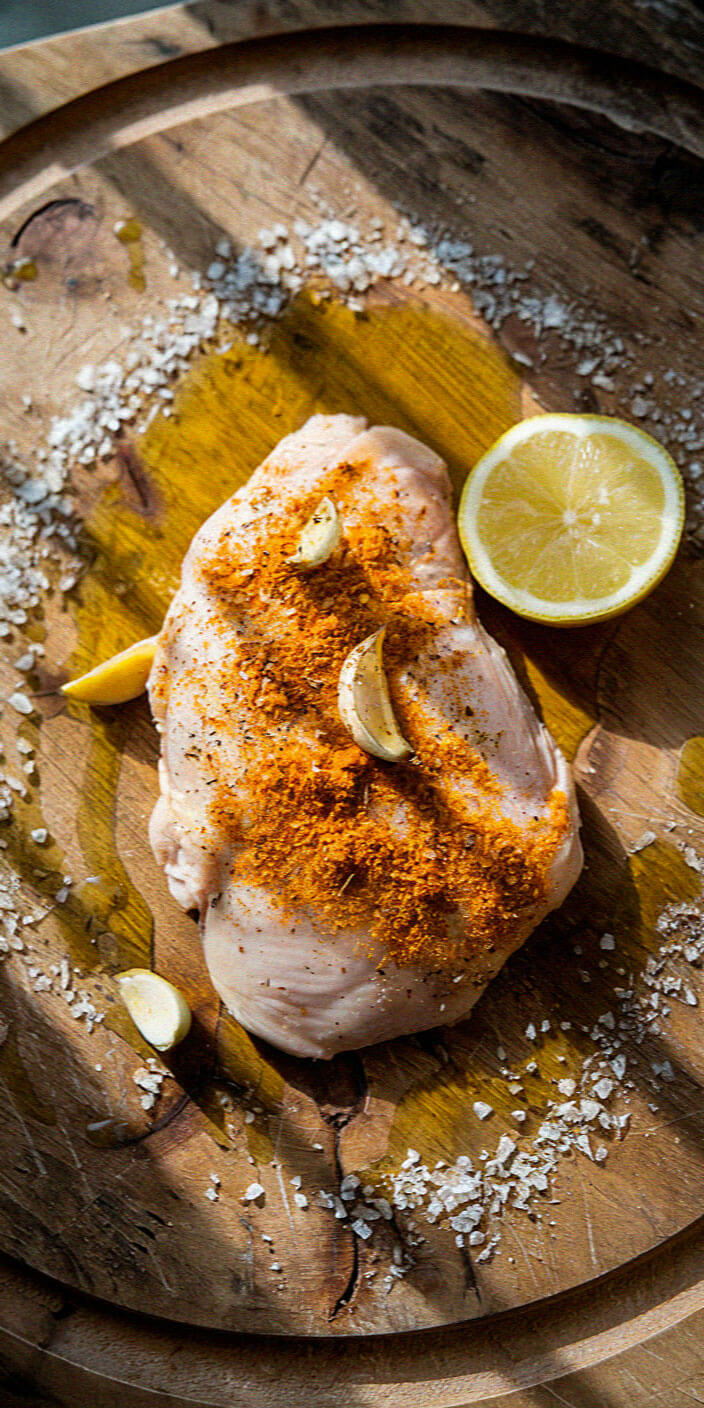
Seasoning is everything. Chicken on its own can be mild, but a good seasoning mix can make it extraordinary.
Try combining salt, pepper, garlic powder, smoked paprika, and a touch of brown sugar for balance. Rub this chicken seasoning on all sides before cooking.
For even more flavor, add a spoonful of chicken broth or butter to the skillet after searing. It creates a quick, rich sauce that keeps the chicken moist.
If you’re baking, brush the seasoned chicken with olive oil before it goes in the oven to help it stay juicy and golden brown.
How to know when chicken is done
You’ll know your chicken is done when the internal temperature reaches 165°F at the thickest part. A thermometer makes this foolproof.
If you don’t have one, slice the chicken at its thickest point; the meat should be opaque and the juices should run clear. Be careful not to overcook.
Once it’s done, remove the chicken from the heat and let the chicken rest. That short pause makes all the difference between dry chicken breast and a perfectly juicy chicken breast.
It’s the moment where moisture settles back into the meat, ensuring tenderness.
How to slice and serve juicy chicken breasts
Once your chicken has rested, it’s time to slice. Always slice chicken against the grain; this keeps each piece tender and easier to chew.
If you’re meal prepping, slice the chicken while it’s still slightly warm, then let it cool before storing. Add the slices to salads, grain bowls, or pasta for quick, easy meals.
If you’re serving it hot, drizzle over some of the pan juice for extra flavor. You can also deglaze the skillet with a splash of chicken broth or white wine to create a simple sauce that pairs beautifully with vegetables or rice.
What if your chicken turns out dry?
Don’t worry, it happens. Dry chicken breast can be revived. Slice it thinly and toss it with a bit of warm chicken broth or a creamy sauce.
Even a squeeze of lemon or drizzle of olive oil helps bring moisture back. Next time, make sure to use a thermometer, let it rest, and avoid cooking on high heat for too long.
Once you get used to the rhythm: pat dry, season, sear, finish in the oven, let it rest, you’ll get perfectly juicy chicken every time. And the more you cook chicken breasts, the better you’ll get at judging by feel, sound, and color too.
Easy chicken variations you can try
Once you master the basics, you can create endless variations. Try a baked chicken with a honey-garlic glaze, a smoky paprika rub, or a creamy herb marinade.
For a greek chicken twist, use yogurt, lemon, and oregano in your marinade; it’s tangy and bright. You can even cook chicken breasts in a cast iron skillet and finish with butter and fresh herbs for restaurant-style flavor at home.
These little tweaks turn your go-to chicken breast into something new and exciting every time, without changing the core method that keeps it tender and juicy.
Why resting your chicken matters
Resting is the most underrated step in any chicken recipe. It’s tempting to cut into that gorgeous golden brown chicken right away, but patience pays off.
Let it rest for 5 minutes before slicing. This lets the juices, which move toward the surface while cooking, redistribute throughout the meat.
If you skip this step, you’ll lose all that moisture the moment you cut in. Resting also gives the surface a chance to firm slightly, so when you slice, you get those clean, perfect pieces of tender chicken.
Common mistakes to avoid when cooking chicken breasts
The most common culprits behind dry chicken are overcooking, skipping the rest, and uneven thickness.
Always check the internal temperature instead of guessing, and remember: the chicken will keep cooking a bit after you remove it from the heat.
Don’t skip patting the chicken dry with a paper towel; excess moisture keeps it from searing properly. And don’t forget to preheat your skillet before adding the chicken, otherwise it won’t get that golden brown crust.
Lastly, resist the urge to move or flip the chicken too often; let it cook undisturbed until it releases easily from the pan.
Bringing it all together
Cooking a perfectly juicy chicken breast isn’t about luck, it’s about rhythm. Start with quality ingredients, prepare chicken properly, use the right heat, and let it rest.
Once you get the hang of it, you’ll never dread cooking chicken again. Whether it’s a weeknight dinner or a special meal, these simple techniques will help your chicken turn out juicy and flavorful every single time.
This website contains affiliate links. As an Amazon affiliate, I earn from qualifying purchases (What’s This?).

